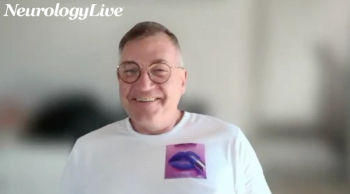
Portable Neuromodulation Stimulator Device for MS Gait Deficit Wins Approval
The PoNS device becomes the first and only medical device cleared in the US for short-term treatment of gait in patients with multiple sclerosis.
Helius Medical Technologies announced today that its Portable Neuromodulation Stimulator (PoNS) device, a short-term treatment for gait deficit due to mild and moderate symptoms of multiple sclerosis (MS), has received marketing authorization from the FDA.1
The treatment is to be used as an adjunct supervised therapeutic exercise program in patients with MS 22 years of age and older and over by prescription only. Dane Andreef, interim president and chief executive officer, Helius, noted that the company is preparing to commercialize the PoNS treatment in the US and expects such action to begin in the first quarter of 2022.
"With the receipt of FDA marketing authorization, Helius is proud to announce that our PoNS device is now the first, and only, medical device cleared in the US for this indication,” Andreef said in a statement. “Our aim in obtaining marketing authorization is to provide MS patients suffering with gait deficit with a non-drug, non-implantable treatment that has the potential to significantly improve their ability to walk, and potentially enhance their safety and quality of life as a result.”
The treatment’s path has been unique to this point, receiving breakthrough designation by the FDA in May 2020 after declining to approve a de novo classification as well as a 510(k) clearance submission in April 2019.2
READ MORE:
At the time, the agency noted that it did not have sufficient information to determine the relative independent contributions of the PoNS device and physical therapy on the improvements from baseline in the efficacy end points observed in its clinical development.
The application included findings from 2 double-blind, randomized controlled clinical trials with a total of 163 participants. A feasibility study published in February 2017 included 14 patients with MS randomized to an active group (n = 7) and sham stimulation group (n = 7). Participants received intensive physical therapy and working memory training for 14 weeks, and investigators used functional magnetic resonance imaging (fMRI) with motor imagery and working-memory tasks completed prior to and following therapy, as well as sensory organization test (SOT), motor performance measures, and neuropsychological assessment.3
Patients included in the study and stimulated with the PoNS device showed a significant improvement from baseline (P = .046) on the SOT. Additionally, fMRI revealed significant blood oxygen level-dependent signal changes in the left primary motor cortex for the active group, while the sham group had increased activity in bilateral premotor cortices. Only the active group showed increased dorsolateral prefrontal cortex activity in the working memory assessments. Altogether, the investigators concluded that the results suggest that PoNS stimulation can enhance motor performance and working memory while also driving neuroplasticity.
The PoNS device is currently authorized for sale in Canada as a class 2, non-implantable medical device. It is also intended as a treatment for chronic balance deficit in conjunction with physical therapy for mild-to-moderate traumatic brain injury (TBI).
“As part of our pre-commercial activities, we will continue to work with the Centers for Medicaid and Medicare with the goal of obtaining reimbursement coverage under the Medicare Coverage of Innovative Technology, or MCIT, pathway for FDA cleared and designated breakthrough devices. Longer-term, we also intend to pursue additional indications for our PoNS device to expand access to our platform technology in order to help as many patients as possible,” Andreeff added in a statement.1
REFERENCES
1. Helius Medical, Inc receives US marketing authorization for the PoNS device. News release. Helius Medical Technologies. March 29, 2021. Accessed March 29, 2021. https://www.globenewswire.com/en/news-release/2021/03/29/2200575/0/en/Helius-Medical-Inc-Receives-U-S-Marketing-Authorization-for-the-PoNS-Device.html
2. Helius Medical Technologies, Inc. announces FDA has granted the PoNS device breakthrough device designation for the treatment of gait deficits due to symptoms of Multiple Sclerosis. News release. May 12, 2020. Accessed March 29, 2020. https://heliusmedical.com/index.php/newsroom/news-release/2020/414-
3. Leonard G, Lapierre Y, Chen JK, et al. Noninvasive tongue stimulation combined with intensive cognitive and physical rehabilitation induces neuroplastic changes in patients with multiple sclerosis: A multimodal neuroimaging study. Mult Scler J Exp Transl Clin. Published online February 1, 2017. doi: 10.1177/2055217317690561
Newsletter
Keep your finger on the pulse of neurology—subscribe to NeurologyLive for expert interviews, new data, and breakthrough treatment updates.









































